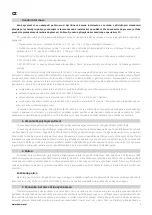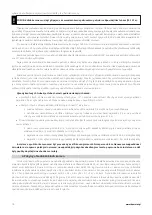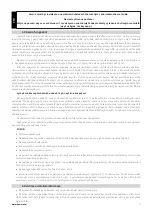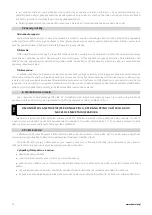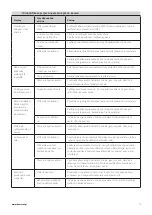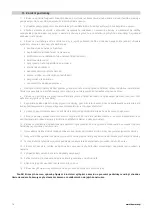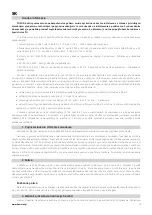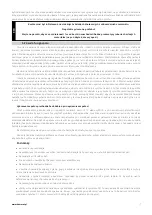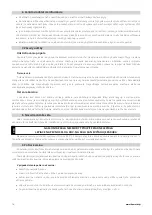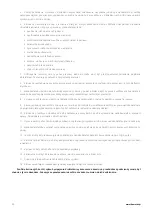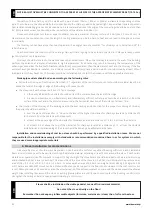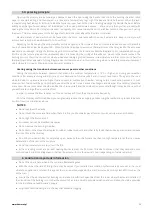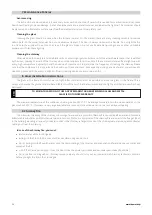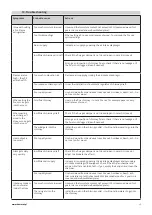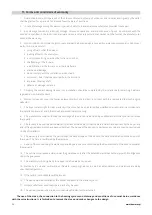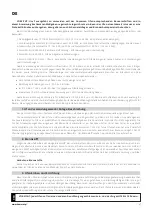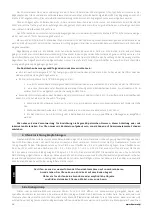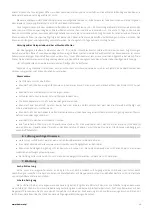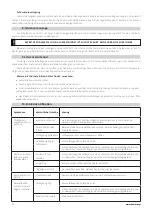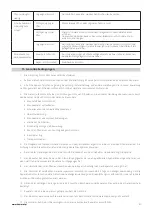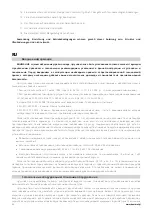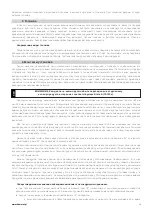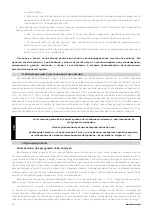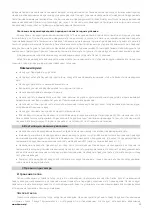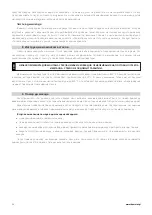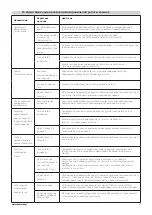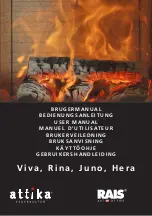
23
www.kawmet.pl
5. Operating principle
Open up the primary and secondary air dampers, open the door using the handle. Insert into the burning chamber rolled
paper or special kindling, and then placed in a cone and a few small dry logs. Light the paper and close the door. When the layer
is created plug heat (about 3 cm thick) to load the furnace proper fuel. At the time of loading wood, gently handle the door. Before
adding next charge of wood, always set the damper to the open position,wait approx. 1 min, and only then you can proceed with
opening the stove doors. Do not open the doors too rapidly. First unseal slowly the doors, wait few seconds, then you can open up
the doors. This procedure prevents the escape of smoke to the room where the fireplace is installed.
Maximum mass of wood, which can be loaded into the stove- see table with stove insert parameters. Keep in mind, you will
achieve best results with wood billets 12 to 15 cm thick.
Adjusting can be done by the air-permeable bolts arranged on a front side of the ash. Users are advised to use in the few firs
hours of operation at low loads about 30 - 50% of nominal load due to excessive thermal stresses that may lead to the excessive
wear and even damage. During the first ten days to mildly use from the furnace to allow the fireplace to dry completely. When you
first fire up the furnace may emit an unpleasant odor. It is caused by the curing of the adhesive, paint or other preservatives. The
burning process should be carried out slowly, while maintaining a gradual increase in temperature in order not to cause harmful
thermal stress. After a period of drying fireplace insert attempt to do an intensive smoking, which completely eliminate unpleasant
odors (they are not toxic). Should ensure adequate ventilation.
heating during the transition between seasons or poor weather conditions
During the transition between seasons, that means the outdoor temperature is 15°C or higher, or during poor weather
conditions (for example strong wind etc.) may occur disruption of chimney draft and in result, reversion of flue gas to the room
while the door is opened and also higher fume content in combustion chamber, during normal combustion process. In such
situation, less fuel should be put into the stove and at the same time air intake diaphragms and damper (if necessary) should be
more open. Above procedures should stabilize the chimney draft and the combustion process (although it may be the case that
you will have to charge the stove more often).
In order to reduce the flow resistance of the air, remove ash from the ash pan more frequently.
Once the chimney draft is stabilized, you can gradually reduce the air supply, yet observing the combustion process to be sure
it will not lead to a situation as above.
NOTES:
•
Do not overheat the device.
•
Do not touch the stove at a time when there is a fire, you should also pay attention to in its vicinity were not children.
•
Do not light the fire too much.
•
Air intakes can not be modified in any way.
•
Do not remove the burning chamber.
•
Do not burn in the stove of waste plastic, rubber, rubber products and other fatty foods that cause air pollution and increase
the risk of fire in the chimney.
•
Do not burn when ashtray is completely open, because then the furnace reaches too high temperatures that can cause
deformation of the cast or their rupture.
•
Do not pour water furnace to put out the fire.
•
All free standing stoves are periodic heating devices (except the P2 stove). This does not mean, that they cannot be used
continuously. Periodic heating means, that fuel from table 1 burns for around 1 hour (depending on fuel parameters)
6. Ventilation important information
•
Do not fire up at a time when in the room are flammable gases.
•
With the unit at the time of firing, there may be smoke if you installed a ventilation system creates a vacuum in the room
where the appliance is located, this applies to most rooms equipped with a mechanical extraction system VMC (such as the
kitchen, etc..).
•
Ensure that the air required for burning can be taken in sufficient quantities from the room where the stove is installed. If
the structure of the building is such that the amount of air is too small to provide oxidation and ventilation should be provided
for the installation of additional air supply.
•
Air grilles should be designed in the way that prevents clogging.
Summary of Contents for P2
Page 33: ...33 www kawmet pl 2 20 3 10 15Pa 150 180 200 45 200 4 2 20 20 45 5 20 i 25 12 0 6 12 0 6...
Page 35: ...35 www kawmet pl 15 C K P2 1 1 6 VMC 7...
Page 36: ...36 www kawmet pl 8 800 C 450 C 800 C 9...
Page 37: ...37 www kawmet pl 10 20 2 b 20 2 20 2...
Page 38: ...38 www kawmet pl 11 1 24 2 3 4 gtxrb 5 6 7 8 9 30 10 11 12 13 14 15 16 17 18...

